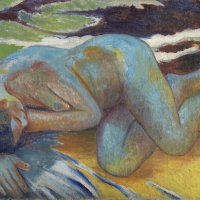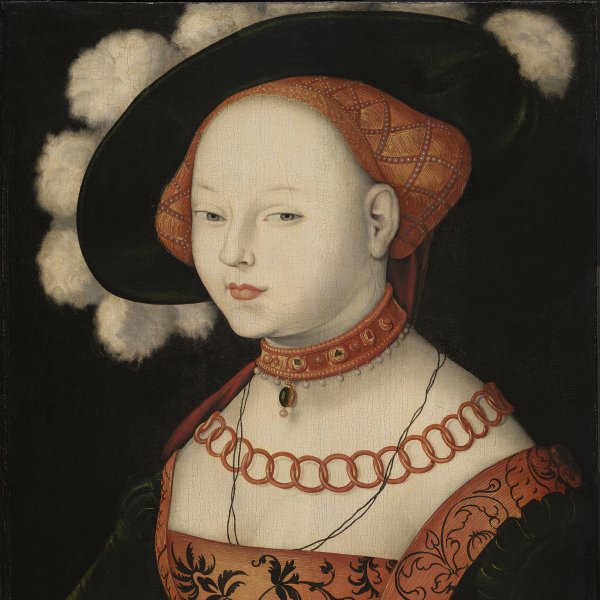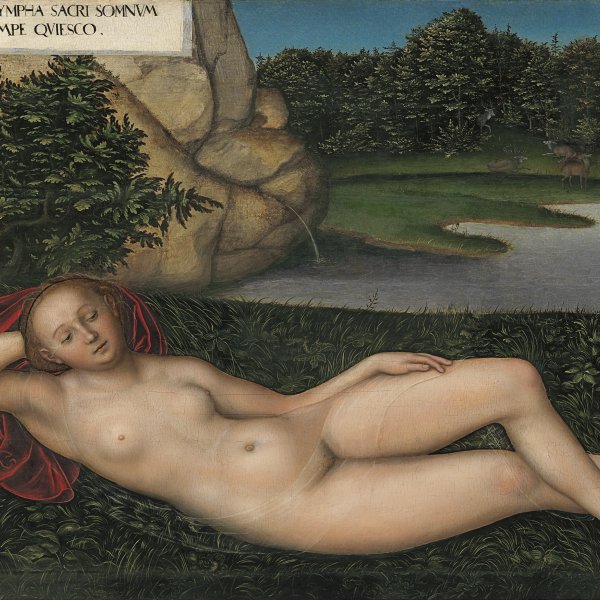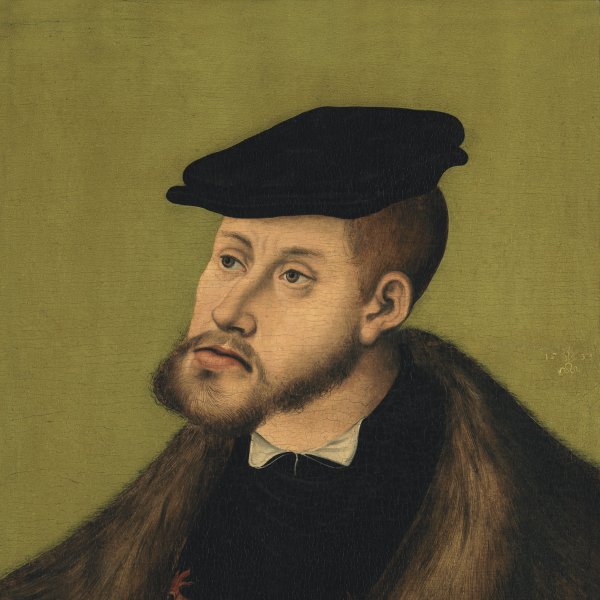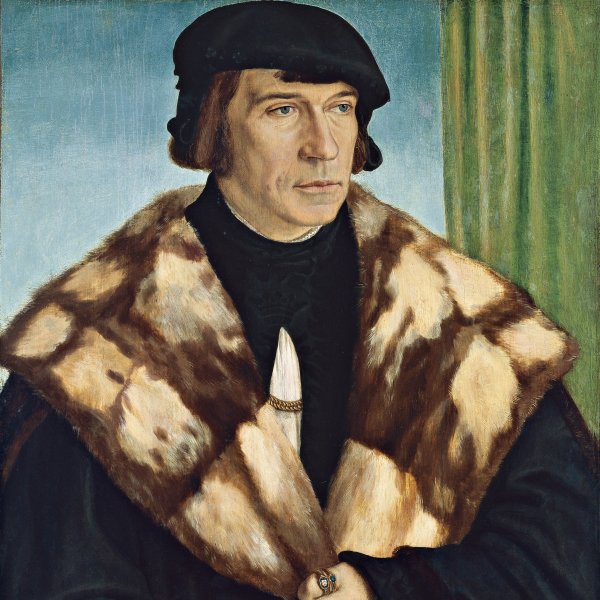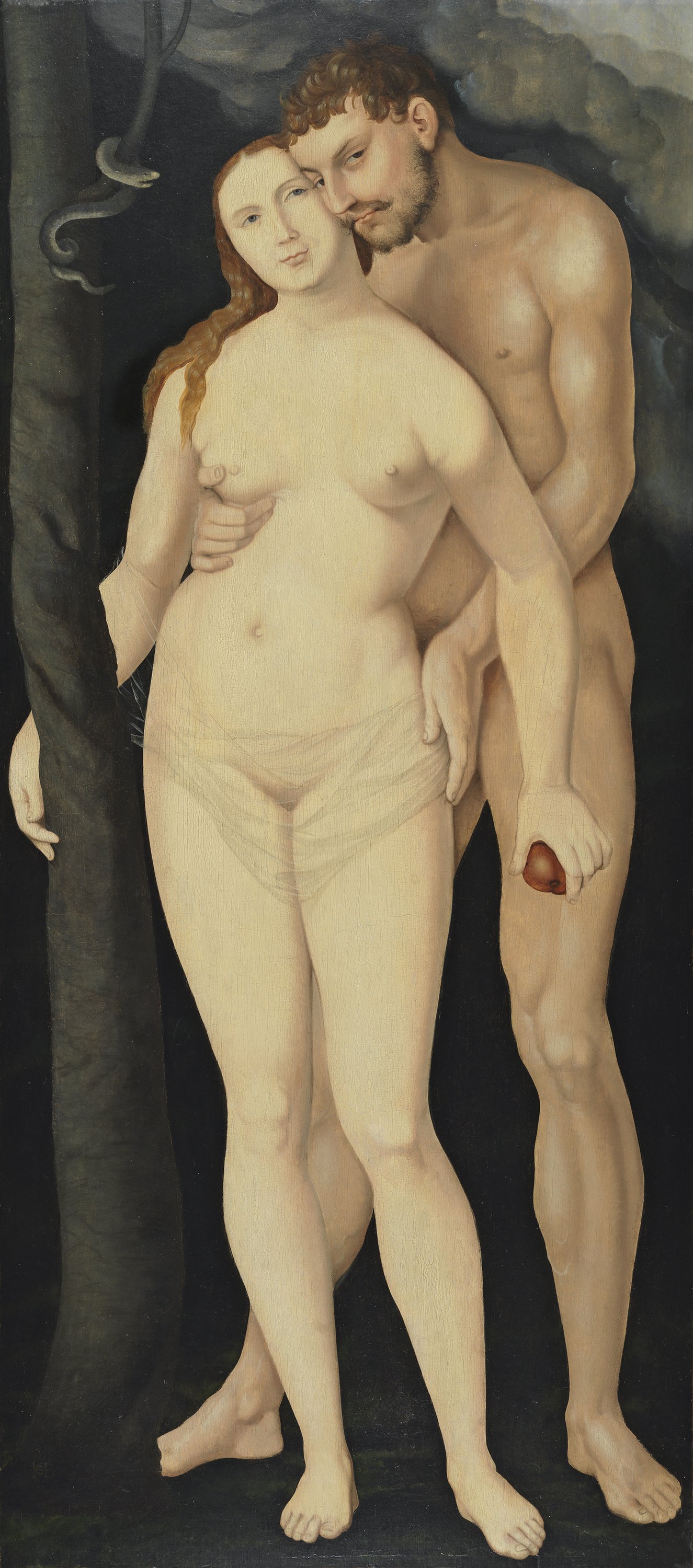Adam and Eve
Adam and Eve is a magnificent study of the male and female nude, executed with enormous precision and a visual power comparable to the work of the greatest masters. It focuses on the theme of Original Sin and depicts the moment when Eve has been tempted by the Devil to take the fruit of the tree, just prior to the central episode. The subject is conveyed not only through the traditional symbols of the serpent and the apple but also by Adam’s telling pose, holding Eve firmly and possessively, and by his suggestive, knowing gaze.
Baldung Grien used an elongated format for this work, in which Eve is depicted with soft, rounded forms and firm, pale skin. The figure of Adam, with his darker skin, reflects the artist’s knowledge of anatomy with the muscles and the different parts of the body defined through the modelling of light and shade. Dating from Baldung Grien’s mature period, it recalls the painting of the same subject by his master Dürer which he would probably have seen during his time in the latter’s studio. Baldung Grien depicted the subject of Original Sin on numerous other occasions, including two prints dated 1511 and 1519.
MGA
In this panel Baldung Grien depicts a traditional subject from biblical history in an unusual way, using a long, narrow format. In the foreground Eve covers her nudity with a transparent veil, which in fact serves to further emphasise this area of her body. Her right arm is wrapped around the dark trunk of the tree of Paradise while her left hand holds the apple. The frontality of her pose is contrasted by that of Adam, who stands behind her and whose legs create a gentle diagonal line that recedes into the picture space. Adam holds Eve in a highly unusual manner with one hand gently resting on her hip and the other caressing her breast. The expressions of the figures are also quite different to the usual presentation in art: while the abstracted Eve looks impassively into the middle distance, Adam establishes a connection with the viewer through his provocative gaze.
Baldung Grien depicts the moment just prior to the Original Sin, when Eve has picked the fruit of the tree, encouraged by the Devil transformed into a serpent that is twined around a small branch on the left. The artist constructed the composition using few colours, primarily the greys and blacks in the imprecise background that includes clouds at the upper right corner, and the flesh tones that harmonise with the ochre used for the hair of the two figures. The only discordant and contrasting chromatic note is provided by the powerful, striking red of the apple held by Eve.
Dürer offered a quite different interpretation of this subject in his print of 1504 and in the two independent panels of the two figures now in the Museo del Prado. In both these works beauty, proportion and harmony are the prevailing elements. For his part, Baldung frequently depicted this subject, particularly in his prints, and always from an original and innovative viewpoint and focusing on the consequences of sin and death. The present panel, which dates from 1531 and thus corresponds to the artist’s mature period, has been compared with regard to subject, composition, format and technique with Grien’s Hercules and Antaeus in the Gemäldegalerie, Kessel. It has been suggested that both were part of a series in which Baldung Grien investigated the theme of death from various viewpoints.
Mar Borobia

